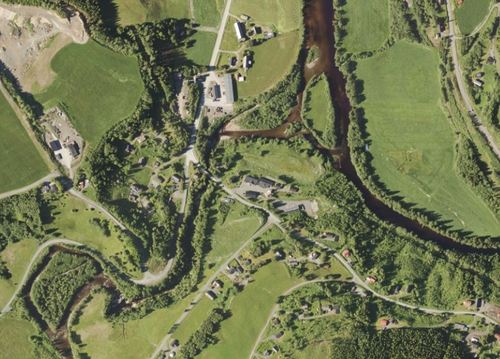Difference between revisions of "Restoration of the riparian zone vegetation"
Bendikhansen (talk | contribs) |
Bendikhansen (talk | contribs) |
||
| Line 1: | Line 1: | ||
| + | =Introduction= | ||
| + | [[file:restoration_riparian_stjordal.png|thumb|500px|Figure 1: Riparian zone vegetation along Stjørdalselva and one of its tributaries in central Norway. The riparian is on most section in place, providing shelter and reducing runoff of particles and nutrients from the agriculture (source: www.norgeibilder.no).]] | ||
| + | |||
| + | The riparian zone or riparian area is the interface between land and a river or stream. The vegetation along the riparian zone provides multiple functions to the river and its ecosystem. The vegetation will provide allochthonous, organic material to the river, shelter and shading to the areas near the shore, and stabilize the soil by the river, thus reduce the runoff of erodible particles, nutrients and potentially other pollutants from the land areas. Vegetation along the river can lead to higher biodiversity in the river, as well as along the shore. | ||
| + | This measure simply refers to reinstate the vegetations along the river in order to provide the benefits of vegetation to the river and its ecosystem, hence reducing the impacts of lack of vegetation along the river. | ||
| + | |||
| + | =[[Methods, tools, and devices]]= | ||
| + | |||
| + | ==During planning== | ||
| + | |||
| + | ==During implementation== | ||
| + | |||
| + | ==During operation== | ||
| + | |||
| + | =Classification Table= | ||
| + | |||
| + | |||
| + | |||
| + | [[category:Habitat measures]][[category:Measures]] | ||
[[category:Habitat measures]][[category:Measures]] | [[category:Habitat measures]][[category:Measures]] | ||
Revision as of 09:32, 22 June 2019
Contents
Introduction
The riparian zone or riparian area is the interface between land and a river or stream. The vegetation along the riparian zone provides multiple functions to the river and its ecosystem. The vegetation will provide allochthonous, organic material to the river, shelter and shading to the areas near the shore, and stabilize the soil by the river, thus reduce the runoff of erodible particles, nutrients and potentially other pollutants from the land areas. Vegetation along the river can lead to higher biodiversity in the river, as well as along the shore. This measure simply refers to reinstate the vegetations along the river in order to provide the benefits of vegetation to the river and its ecosystem, hence reducing the impacts of lack of vegetation along the river.
